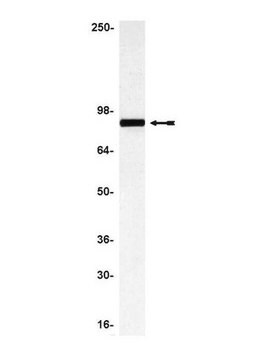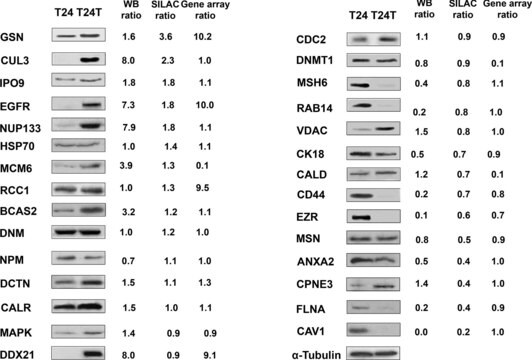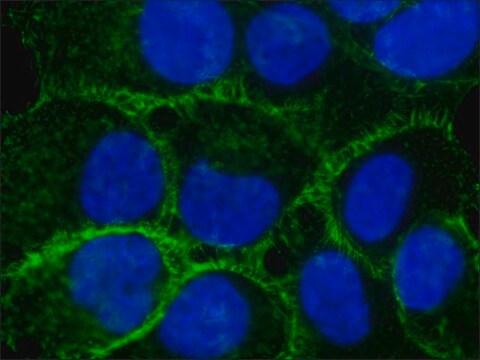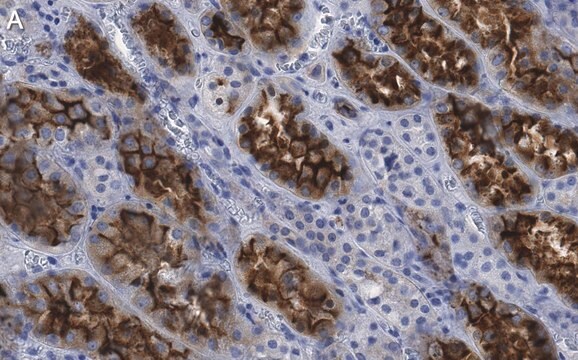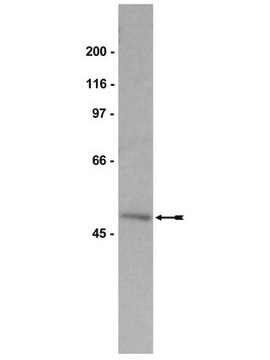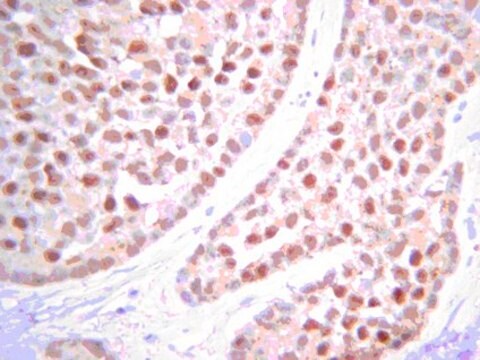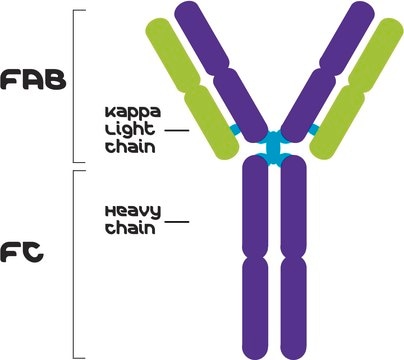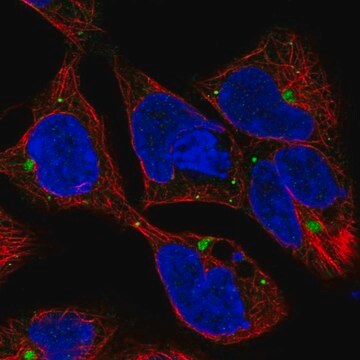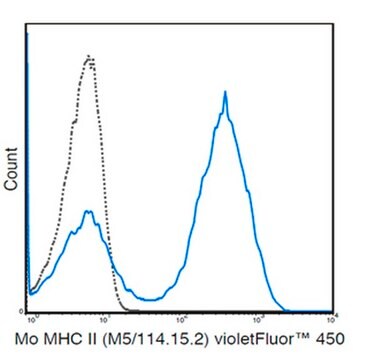MAB3822-C
Anti-Ezrin Antibody, clone 4A5, Ascites Free
clone 4A5, from mouse
Sinônimo(s):
Cytovillin, Villin-2, p81, Ezrin
About This Item
Produtos recomendados
fonte biológica
mouse
Nível de qualidade
forma do anticorpo
purified immunoglobulin
tipo de produto de anticorpo
primary antibodies
clone
4A5, monoclonal
reatividade de espécies
human, rat, rabbit, mouse
técnica(s)
electron microscopy: suitable
immunocytochemistry: suitable
immunohistochemistry: suitable
immunoprecipitation (IP): suitable
western blot: suitable
Isotipo
IgG1κ
nº de adesão NCBI
nº de adesão UniProt
Condições de expedição
wet ice
modificação pós-traducional do alvo
unmodified
Informações sobre genes
human ... EZR(7430)
Descrição geral
Especificidade
Imunogênio
Aplicação
Cell Structure
Adhesion (CAMs)
Immunohistochemistry Analysis: A representative lot detected a higher Ezin immunoreactivity in paraffin-embedded human medulloblastoma sections when compared with normal cerebellum sections (Haeberle, H., et al. (2012). Neoplasia. 14(7):666-669).
Immunohistochemistry Analysis: A representative lot immunostained parietal cells in rabbit gastric mucosa (Hanzel, D.K., et al. (1989). Am. J. Physiol. 256(6 Pt 1):G1082-G1089).
Immunoprecipitation Analysis: A representative lot immunoprecipitated Ezin from human A431 cells. The immunoprecipitated Ezrin was phosphorylated on Ser66 from dbcAMP‐treated, but not cAMP‐treated, A431 cells (Wang, S., et al. (2009). Cell Res. 19(12):1350-1362).
Electron Microscopy Analysis: A representative lot detected Ezrin on microvilli of the intracellular canaliculi (IC) and the subapical region of resting parietal cells in Lowicryl HM20-embedded rabbit gastric gland ultrathin sections (Sawaguchi, A., et al. (2004). J. Histochem. Cytochem. 52(1): 77–86).
Immunocytochemistry Analysis: A representative lot detected exogenously expressed human GST fusion protein by fluorescent immunocytochemistry staining of formaldehyde-fixed, Triton X-100-permeabilized rabbit gastric parietal cells (Zhou, R., et al. (2003). J. Biol. Chem. 278(37):35651-35659).
Western Blotting Analysis: A representative lot detected both the endogenous rabbit Ezrin as well as exogenously expressed human Ezrin GST fusion proteins in transfected rabbit gastric parietal cells (Zhou, R., et al. (2003). J. Biol. Chem. 278(37):35651-35659).
ELISA Analysis: Clone 4A5 hybridoma culture supernatant was screened for its immunoreactivity by ELISA and found to react with both dentured and non-denatured 80 kDa Ezrin preparations from rabbit gastric glands/mucosa vesicular fractions (Hanzel, D.K., et al. (1989). Am. J. Physiol. 256(6 Pt 1):G1082-G1089).
Qualidade
Western Blotting Analysis: 0.5 µg/mL of this antibody detected Ezrin in 10 µg of L6 rat myoblast lysate.
Descrição-alvo
forma física
Armazenamento e estabilidade
Outras notas
Exoneração de responsabilidade
Não está encontrando o produto certo?
Experimente o nosso Ferramenta de seleção de produtos.
Código de classe de armazenamento
12 - Non Combustible Liquids
Classe de risco de água (WGK)
WGK 1
Ponto de fulgor (°F)
Not applicable
Ponto de fulgor (°C)
Not applicable
Certificados de análise (COA)
Busque Certificados de análise (COA) digitando o Número do Lote do produto. Os números de lote e remessa podem ser encontrados no rótulo de um produto após a palavra “Lot” ou “Batch”.
Já possui este produto?
Encontre a documentação dos produtos que você adquiriu recentemente na biblioteca de documentos.
Nossa equipe de cientistas tem experiência em todas as áreas de pesquisa, incluindo Life Sciences, ciência de materiais, síntese química, cromatografia, química analítica e muitas outras.
Entre em contato com a assistência técnica